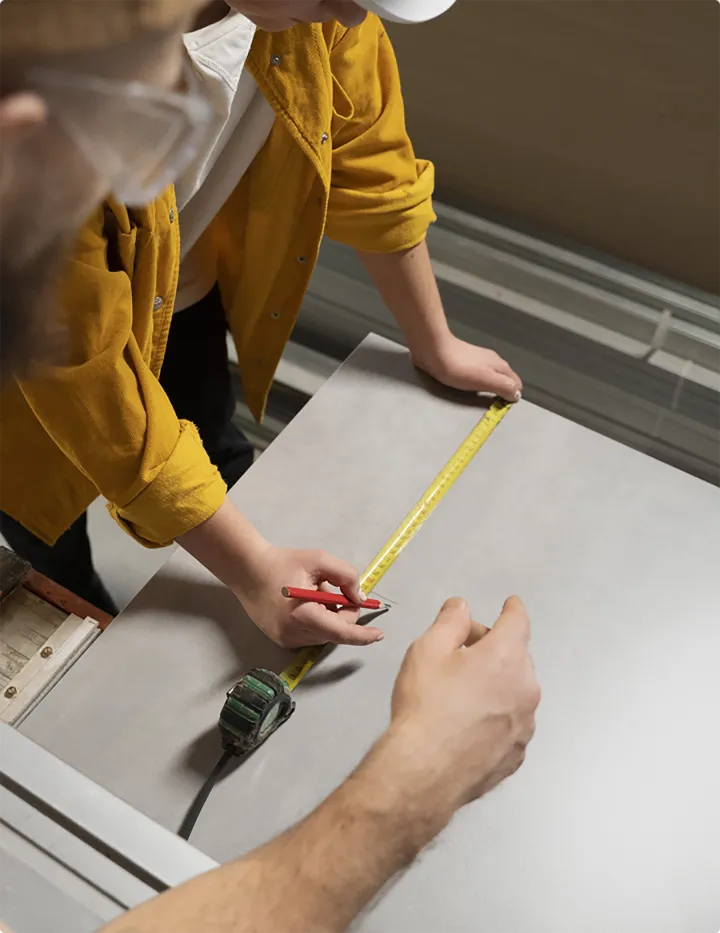Dec . 13, 2024 04:51 Back to list
pvc vs gypsum false ceiling
PVC vs Gypsum False Ceiling A Comprehensive Comparison
When it comes to interior design, the ceiling is often considered one of the most significant yet overlooked aspects of a room’s aesthetic. A false ceiling, also known as a dropped or suspended ceiling, serves not only to enhance the décor but also to provide various functional benefits. Two popular materials used for false ceilings are PVC (Polyvinyl Chloride) and gypsum. Each material has its own advantages and disadvantages, and the choice between them can significantly affect the overall look, feel, and functionality of a space.
Material Properties and Durability
PVC is a synthetic plastic polymer that is widely recognized for its durability and moisture resistance. This makes it an excellent choice for areas prone to humidity, such as kitchens and bathrooms. PVC false ceilings are often easy to clean and maintain, requiring little more than occasional wiping to keep them looking fresh. They do not rust, corrode, or warp, which is a considerable plus in humid environments.
On the other hand, gypsum is a natural mineral that is used to create plasterboard or drywall. Gypsum false ceilings offer a wide range of designs and finishes, allowing for intricate details and patterns. While gypsum ceilings are relatively durable, they are susceptible to damage from water. If exposed to high levels of moisture, gypsum can sag and deteriorate, making it less suitable for high-humidity areas unless treated appropriately.
Aesthetic Appeal
One of the most significant aspects of false ceilings is their impact on aesthetics. PVC ceilings typically come in a variety of colors and finishes, including wood textures and glossy options. They can be an excellent choice for modern and contemporary interiors, providing a sleek, clean look.
Gypsum ceilings, however, hold an edge when it comes to versatility in design. They can be easily molded into different shapes and sizes, enabling intricate designs like curved edges and ornate patterns. Gypsum also offers options for various finishes, including painted surfaces and decorative plaster designs. This versatility makes gypsum an excellent choice for more traditional or elaborate interior designs.
pvc vs gypsum false ceiling

Installation Process
The installation process for PVC and gypsum ceilings differs considerably. PVC false ceilings are typically lightweight, which makes them easier to handle and install. They often come in panels or tiles that can be quickly fitted into a grid frame. This means that the overall installation time can be significantly reduced, making it a convenient option for many homeowners and contractors.
In contrast, installing a gypsum false ceiling tends to be more labor-intensive. The process involves cutting the drywall to size, fixing it to the ceiling frame, and then finishing it with plaster, mud, and a final coat of paint. This can increase labor costs and installation time. However, the final outcome often justifies the effort, as gypsum ceilings can provide a more polished and refined appearance.
Cost Considerations
When it comes to cost, PVC false ceilings are generally more affordable compared to gypsum options. The material itself is cheaper, and the quicker installation can save on labor costs. However, it's essential to consider long-term durability and maintenance costs. While PVC may have a lower upfront cost, over time, especially in humid areas, there may be a need for replacement or repairs.
Gypsum ceilings usually have a higher initial cost, but their aesthetic appeal and design versatility can increase the value of a property. Additionally, with proper maintenance and care, a gypsum ceiling can last for many years without needing replacement.
Conclusion
Ultimately, the choice between PVC and gypsum false ceilings hinges on individual preferences, budget, and the specific requirements of the space. PVC ceilings come with advantages in durability and cost-effectiveness, especially in humid environments, whereas gypsum ceilings offer superior aesthetics and design flexibility. It's essential for homeowners and designers to weigh the pros and cons of each material carefully and consider factors like area usage, maintenance, and overall design goals before making a final decision. With the right choice, a false ceiling can transform an ordinary room into an extraordinary space.
-
Quality Ceiling Trap Doors & Access Panels | Easy & Secure AccessNewsAug.30,2025
-
Durable Ceiling T Grid Systems | Easy InstallationNewsAug.29,2025
-
PVC Gypsum Ceiling: Durable, Laminated Tiles for Modern SpacesNewsAug.28,2025
-
Pvc Gypsum Ceiling Is DurableNewsAug.21,2025
-
Mineral Fiber Board Is DurableNewsAug.21,2025
-
Ceiling Tile Clip Reusable DesignNewsAug.21,2025







